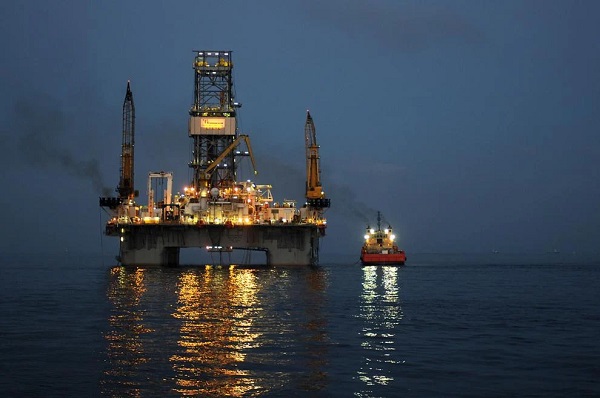Business
Nestlé boycott begins as activists target DEI rollbacks

 MxM News
MxM News
Quick Hit:
The latest corporate boycott targeting companies rolling back their diversity, equity, and inclusion (DEI) initiatives is set to begin this week, with Nestlé in the crosshairs. Unlike previous boycotts of Amazon and Target, which focused on avoiding specific retailers, this campaign urges consumers to boycott hundreds of household products from March 21 to March 28. Other major companies, including Walmart, McDonald’s, and General Mills, are also slated for boycotts in the coming months.
Key Details:
-
The Nestlé boycott runs from March 21 to March 28 and encourages avoiding products like Cheerios, KitKat, Purina pet food, and DiGiorno frozen pizza.
-
The movement follows the rollback of DEI policies by several major corporations after President Donald Trump’s call to eliminate DEI at the federal level.
-
Additional boycotts are planned for Walmart, McDonald’s, and Amazon, with an “economic blackout” scheduled for April 18.
Diving Deeper:
The push for boycotts against Nestlé and other corporations stems from a broader activist response to changes in corporate policies following President Donald Trump’s directive to rescind DEI initiatives at the federal level. Many companies, including Amazon, Target, and Walmart, have scaled back or eliminated their DEI programs, prompting backlash from activist groups.
While past boycotts targeted specific retailers—such as avoiding Amazon purchases or skipping Target shopping trips—the Nestlé boycott is structured differently. Consumers are being asked to avoid a wide range of products, from Coffee-Mate creamers to Stouffer’s frozen meals and Perrier sparkling water. This more expansive approach seeks to impact Nestlé’s bottom line across multiple product categories, rather than just limiting consumer spending at a particular store.
This campaign is part of a broader wave of organized economic boycotts. A 40-day boycott of Target was launched last week, intentionally aligning with Lent, a religious period of fasting leading up to Easter. Additionally, Amazon is facing another boycott in May following one that concluded recently.
Nestlé is far from the last target. Activists have mapped out additional boycotts for General Mills (April 21-28), McDonald’s (June 24-30), and an Independence Day boycott on July 4. These efforts appear to be designed for maximum financial pressure, with coordinated economic “blackouts” meant to disrupt revenue streams at key moments throughout the year.
As these corporate boycotts continue, companies may be forced to decide between maintaining DEI initiatives to appease activists or rolling them back to avoid alienating a different segment of their customer base. With President Trump advocating against DEI policies, businesses that comply with his agenda may find themselves the target of an increasingly organized opposition.
Business
Residents in economically free states reap the rewards

From the Fraser Institute
A report published by the Fraser Institute reaffirms just how much more economically free some states are compared with others. These are places where citizens are allowed to make more of their economic choices. Their taxes are lighter, and their regulatory burdens are easier. The benefits for workers, consumers and businesses have been clear for a long time.
There’s another group of states to watch: “movers” that have become much freer in recent decades. These are states that may not be the freest, but they have been cutting taxes and red tape enough to make a big difference.
How do they fare?
I recently explored this question using 22 years of data from the same Economic Freedom of North America index. The index uses 10 variables encompassing government spending, taxation and labour regulation to assess the degree of economic freedom in each of the 50 states.
Some states, such as New Hampshire, have long topped the list. It’s been in the top five for three decades. With little room to grow, the Granite State’s level of economic freedom hasn’t budged much lately. Others, such as Alaska, have significantly improved economic freedom over the last two decades. Because it started so low, it remains relatively unfree at 43rd out of 50.
Three states—North Carolina, North Dakota and Idaho—have managed to markedly increase and rank highly on economic freedom.
In 2000, North Carolina was the 19th most economically free state in the union. Though its labour market was relatively unhindered by the state’s government, its top marginal income tax rate was America’s ninth-highest, and it spent more money than most states.
From 2013 to 2022, North Carolina reduced its top marginal income tax rate from 7.75 per cent to 4.99 per cent, reduced government employment and allowed the minimum wage to fall relative to per-capita income. By 2022, it had the second-freest labour market in the country and was ninth in overall economic freedom.
North Dakota took a similar path, reducing its 5.54 per cent top income tax rate to 2.9 per cent, scaling back government employment, and lowering its minimum wage to better reflect local incomes. It went from the 27th most economically free state in the union in 2000 to the 10th freest by 2022.
Idaho saw the most significant improvement. The Gem State has steadily improved spending, taxing and labour market freedom, allowing it to rise from the 28th most economically free state in 2000 to the eighth freest in 2022.
We can contrast these three states with a group that has achieved equal and opposite distinction: California, Delaware, New Jersey and Maryland have managed to decrease economic freedom and end up among the least free overall.
What was the result?
The economies of the three liberating states have enjoyed almost twice as much economic growth. Controlling for inflation, North Carolina, North Dakota and Idaho grew an average of 41 per cent since 2010. The four repressors grew by just 24 per cent.
Among liberators, statewide personal income grew 47 per cent from 2010 to 2022. Among repressors, it grew just 26 per cent.
In fact, when it comes to income growth per person, increases in economic freedom seem to matter even more than a state’s overall, long-term level of freedom. Meanwhile, when it comes to population growth, placing highly over longer periods of time matters more.
The liberators are not unique. There’s now a large body of international evidence documenting the freedom-prosperity connection. At the state level, high and growing levels of economic freedom go hand-in-hand with higher levels of income, entrepreneurship, in-migration and income mobility. In economically free states, incomes tend to grow faster at the top and bottom of the income ladder.
These states suffer less poverty, homelessness and food insecurity and may even have marginally happier, more philanthropic and more tolerant populations.
In short, liberation works. Repression doesn’t.
Business
Some Of The Wackiest Things Featured In Rand Paul’s New Report Alleging $1,639,135,969,608 In Gov’t Waste


From the Daily Caller News Foundation
Republican Kentucky Sen. Rand Paul released the latest edition of his annual “Festivus” report Tuesday detailing over $1 trillion in alleged wasteful spending in the U.S. government throughout 2025.
The newly released report found an estimated $1,639,135,969,608 total in government waste over the past year. Paul, a prominent fiscal hawk who serves as the chairman of the Senate Homeland Security and Governmental Affairs Committee, said in a statement that “no matter how much taxpayer money Washington burns through, politicians can’t help but demand more.”
“Fiscal responsibility may not be the most crowded road, but it’s one I’ve walked year after year — and this holiday season will be no different,” Paul continued. “So, before we get to the Feats of Strength, it’s time for my Airing of (Spending) Grievances.”
Dear Readers:
As a nonprofit, we are dependent on the generosity of our readers.
Please consider making a small donation of any amount here.
Thank you!
The 2025 “Festivus” report highlighted a spate of instances of wasteful spending from the federal government, including the Department of Health and Human Services (HHS) spent $1.5 million on an “innovative multilevel strategy” to reduce drug use in “Latinx” communities through celebrity influencer campaigns, and also dished out $1.9 million on a “hybrid mobile phone family intervention” aiming to reduce childhood obesity among Latino families living in Los Angeles County.
The report also mentions that HHS spent more than $40 million on influencers to promote getting vaccinated against COVID-19 for racial and ethnic minority groups.
The State Department doled out $244,252 to Stand for Peace in Islamabad to produce a television cartoon series that teaches children in Pakistan how to combat climate change and also spent $1.5 million to promote American films, television shows and video games abroad, according to the report.
The Department of Veterans Affairs (VA) spent more than $1,079,360 teaching teenage ferrets to binge drink alcohol this year, according to Paul’s report.
The report found that the National Science Foundation (NSF) shelled out $497,200 on a “Video Game Challenge” for kids. The NSF and other federal agencies also paid $14,643,280 to make monkeys play a video game in the style of the “Price Is Right,” the report states.
Paul’s 2024 “Festivus” report similarly featured several instances of wasteful federal government spending, such as a Las Vegas pickleball complex and a cabaret show on ice.
The Trump administration has been attempting to uproot wasteful government spending and reduce the federal workforce this year. The administration’s cuts have shrunk the federal workforce to the smallest level in more than a decade, according to recent economic data.
Festivus is a humorous holiday observed annually on Dec. 23, dating back to a popular 1997 episode of the sitcom “Seinfeld.” Observance of the holiday notably includes an “airing of grievances,” per the “Seinfeld” episode of its origin.
-

 armed forces1 day ago
armed forces1 day agoRemembering Afghanistan and the sacrifices of our military families
-

 Frontier Centre for Public Policy1 day ago
Frontier Centre for Public Policy1 day agoTent Cities Were Rare Five Years Ago. Now They’re Everywhere
-

 Opinion1 day ago
Opinion1 day agoPope Leo XIV’s Christmas night homily
-

 Fraser Institute1 day ago
Fraser Institute1 day agoHow to talk about housing at the holiday dinner table
-

 Fraser Institute12 hours ago
Fraser Institute12 hours agoCarney government sowing seeds for corruption in Ottawa
-

 Alberta12 hours ago
Alberta12 hours agoAlberta Next Panel calls for less Ottawa—and it could pay off
-

 Energy12 hours ago
Energy12 hours agoWhile Western Nations Cling to Energy Transition, Pragmatic Nations Produce Energy and Wealth
-

 International12 hours ago
International12 hours agoNo peace on earth for ISIS: Trump orders Christmas strikes after Christian massacres









